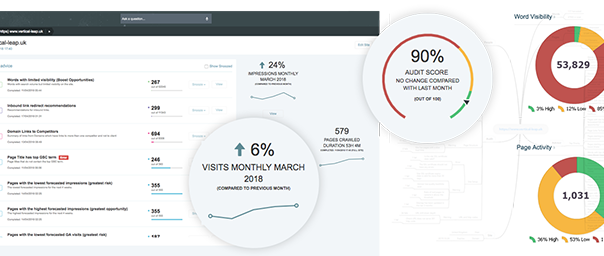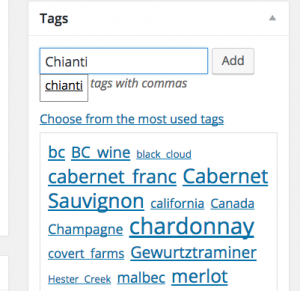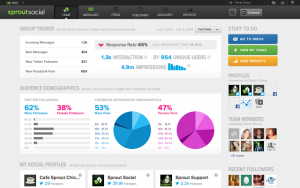We’ve learned a lot over the past 12 months about where the search marketing industry is heading, with some of the most significant algorithm updates in years and the ongoing evolution of some key technologies. Based on this, here are five search marketing trends that will likely define 2020:
- Optimising for BERT and a smarter Google
- Creating and reworking content for E-A-T
- Voice search finally comes of age
- No more compromises with technical SEO
- Seizing opportunities first with programmatic SEO
These trends are largely going to decide which brands and search marketers are best positioned for the decade ahead. Meanwhile, the increasingly competitive nature of modern SEO will mean those that fall behind will have a difficult time in making up ground later.
Trend #1: ‘Optimising’ for BERT and a smarter Google
When Google rolled out its new BERT algorithm in late October, Danny Sullivan took to Twitter to tell us “there’s nothing to optimise for with BERT… the fundamentals of us seeking to reward great content remain unchanged.”
There’s nothing to optimize for with BERT, nor anything for anyone to be rethinking. The fundamentals of us seeking to reward great content remain unchanged.
— Danny Sullivan (@dannysullivan) October 28, 2019
While that’s true to some extent and I can see why Danny would want to say it, there are things SEOs can and should be doing after the BERT rollout and they count as optimisation in my books.
BERT increases Google’s ability to understand the contextual meaning of search queries. It uses an AI system called natural language processing (NLP) to compare queries with previous searches to deliver more relevant results. So when a user is trying to find maths books for adults, BERT should help Google to return results that are geared towards adults rather than children.

If BERT is doing its job, Google should even be able to match up search terms like “adult” with keywords like “grownups” and other synonyms. The aim is to deliver more relevant results to each user, based on contextual meaning, rather than the specific keywords being used and ignoring important contextual phrases like “adult”.
So how do we optimise for BERT in 2020?
Well, that example query above would be a frustrating opportunity for brands selling maths books for adults because Google wasn’t reliable at matching the search query to results specifying the adult aspect. If the same brand also sells maths books for adults, perhaps the opportunity is still there but the user experience is fragmented.
Now, this kind of opportunity is more valuable to brands because Google is more capable of delivering relevant results for more complex query meanings.
In 2020, marketers need to reassess their organic search opportunities, particularly when it comes to long-tail keywords and complex queries that Google has had trouble understanding in the past. BERT isn’t going to fix all of Google’s interpretation problems but it is going to produce opportunities that weren’t previously there or weren’t reliable enough to create campaigns around.
Trend #2: Creating and reworking content for E-A-T
While BERT was a significant moment for search in 2019, the topic that dominated last year was E-A-T, which is Google’s own acronym for expertise, authority and trustworthiness. These three concepts are nothing new for search marketers but a string of core algorithm updates in 2018 and 2019 all pointed towards these having more weight in Google’s algorithm.
To sum up, there are a number of things search marketers need to do in order to optimise for E-A-T:
- Ensure content is published by people with genuine expertise on the subjects covered.
- Ensure these experts have content published on other reputable sites, covering the same topics (so Google can verify their expertise).
- Ensure all content published is factually accurate and verifiable.
- Support claims with references and data from trusted sources.
- Publish off-page content on relevant, trusted websites.
- Create separate “about us,” contact, privacy policy, T&Cs pages (etc) where relevant and ensure they’re filled with accurate information.
- Manage third-party references where possible – e.g. Google My Business, Google Reviews, Wikipedia, Trustpilot, LinkedIn etc.
Practically speaking, the most difficult aspect of this for most brands and search marketers will be ensuring that their content is being published by experts with verifiable expertise on the same topics. This may take time to achieve but recent algorithm updates have shown how important this is to Google – so make this a priority for 2020.
Start by putting a process in place to create this kind of content going forward and then work on revising existing content to ensure it meets the new E-A-T standards. First, you’ll want to update any content/pages that have seen a performance drop due to E-A-T. Then, you can start identifying the remaining pages that could benefit most from optimising for E-A-T and gradually bring your entire site up to standard.
Trend #3: Voice search as a commercial tool
For years now, search marketers have been told to optimise for voice but the business opportunities from this technology have been sparse at best. While adoption is on the rise, there’s not much commercial value in people using Google Home to control their lights or play their favourite songs. Search marketers need users to be using voice for product searches, purchases and other consumer actions before it’s worth optimising for this channel.
According to Microsoft’s 2019 Voice Report (PDF), 2020 might be the year search marketers take voice search seriously. Its report lists some of the most common tasks people are using personal assistants for:
- Searching for a quick fact – 68%
- Asking for directions – 65%
- Searching for a product/service – 52%
- Searching for a business – 47%
- Researching a product/service – 44%
- Making a shopping list – 39%
- Comparing products/services – 31%
- Price comparison – 30%
- Adding items to a shopping list – 26%
- Making a purchase – 25%
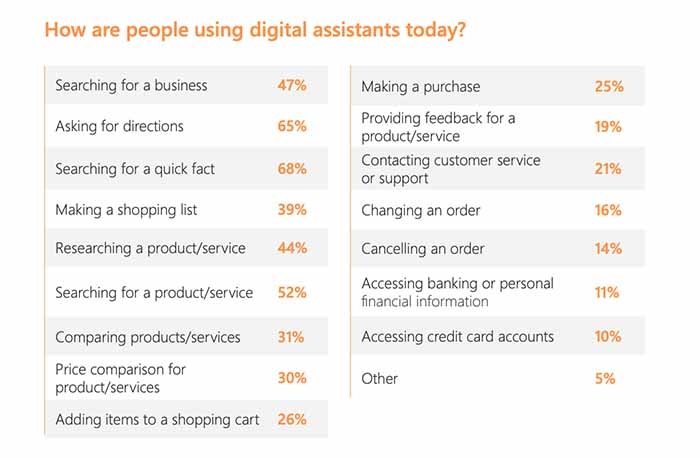
Based on these figures, it seems voice users are starting to see the platform as a commercial tool, which could mark the tipping point in terms of voice optimisation. With more than half of users using voice to search for a product/service (52%), search marketers will start to look at voice as a commercially viable channel, knowing that usage will continue to increase in the years to come.
Crucially, optimising for voice search as it currently stands, also aligns with the direction Google is heading in with featured snippets, single answer results and zero-click searches. So, for now, optimising for voice isn’t going to take anything too radical but this may change as user habits evolve and the likes of Google further integrate the technology into the search experience.
Trend #4: Doubling down on technical SEO
With organic opportunities becoming more competitive, brands can’t let technical issues get in the way of ranking positions they would otherwise be able to achieve. What’s the point in investing heavily in all of that great content if some sloppy redirects or page speed issues stop it from ranking as well as it could?
As a bare minimum, make sure you have regular checks in place for the following:
- Broken links
- Link quality (inbound and outbound)
- Redirects
- Page speed
- Mobile-friendliness
- Crawl errors
- URL analysis
- Robot.txt analysis
- XML sitemap analysis
- Duplicate content checks
Most of these tasks can be automated; you can create notifications to flag up any issues, which means you only need to take manual action when a problem is detected. To provide some context to how much of an opportunity there is in prioritising technical SEO in 2020, Unbounce’s 2019 Page Speed Report found that only 3% of marketers consider page speed and improving the mobile experience to be priorities.
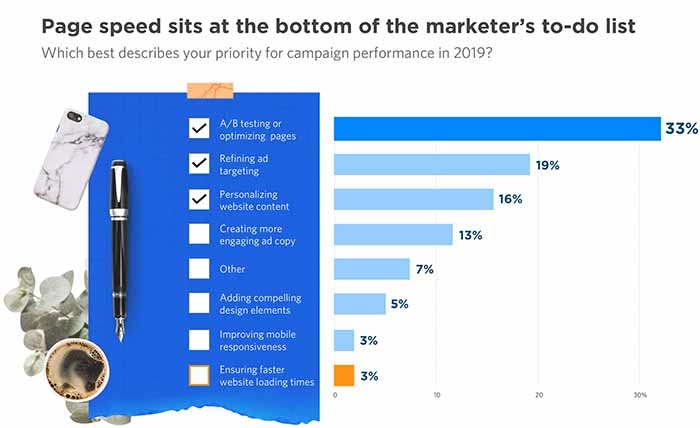
This presents a major opportunity for brands and searches marketers to get a key advantage over the majority of their competitors.
Trend #5: Getting there first with programmatic SEO
All of the latest trends in search marketing present new opportunities but pinpointing these quickly enough in 2020 is going to be crucial. Whether it’s BERT or voice search, the opportunities are going to be very different for one brand to the next. Search marketers can’t hang around for reports from third-party sources to reveal what their next steps should be.
With featured snippets showing for up to 86.6% of desktop searches and 73.3% of mobile searches, marketers are increasingly competing for one place – this means you need to get there first.
To identify these opportunities first, marketers need to take a programmatic approach to SEO. We use our own in-house software, Apollo Insights, to analyse millions of searches, results and pages to find new ranking opportunities as they emerge. Instead of simply using this data to measure performance, we use AI predictive algorithms to spot new search opportunities in real-time, including:
- New search trends
- Gaps in your content
- Which type of content is most likely to succeed
- Content that isn’t performing as well as it once did
- Content that’s working but could be improved further
- Opportunities for seasonal content
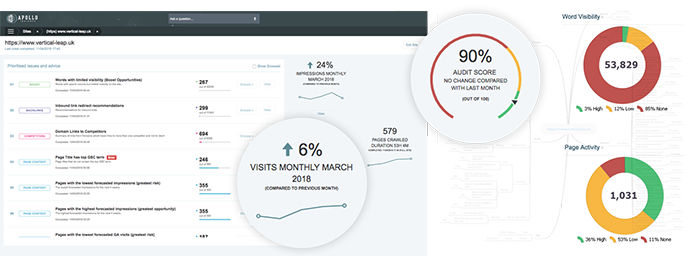 Insights from Apollo Insights
Insights from Apollo Insights
Instead of hanging around and waiting for the industry to catch up with the latest trends, we make full use of our data and predictive algorithms to adapt with trends as they evolve. Without this data-driven approach, search marketers are always going to be a step behind their top-ranking competitors.
For search marketers, 2020 is going to be a busy year and one that’s going to define their position in the industry for years to come. The window of opportunity in organic search continues to get smaller and the marketers/brands who react first will have a significant advantage over everyone else playing catch-up. We’re already seeing this with the drastic increase in featured snippets across desktop and mobile searches – a trend that will only become more obvious as technologies like voice search start a growing percentage of consumer journeys.
Digital & Social Articles on Business 2 Community
(35)
Report Post